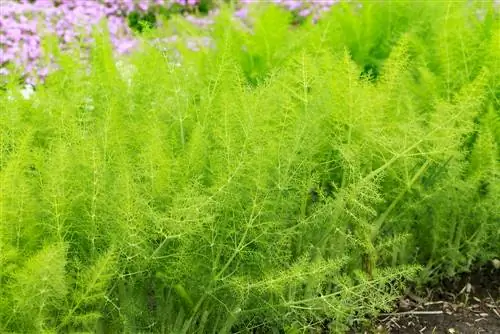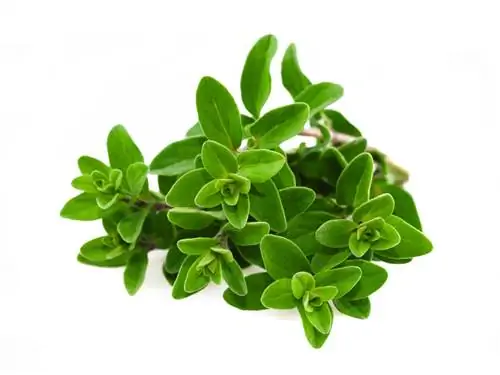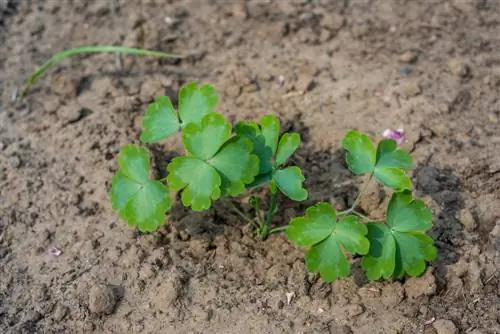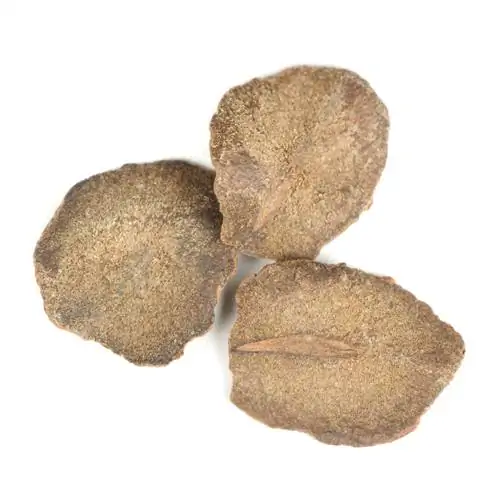- Author admin [email protected].
- Public 2023-12-16 16:46.
- Last modified 2025-01-23 11:21.
Anise, which belongs to the umbelliferous family, has been cultivated as a spice and medicinal plant for many centuries. Its aroma, slightly reminiscent of licorice, is used to refine desserts and spirits and goes perfectly with salads and vegetable dishes. Even though anise is a little demanding, it is easy to grow in your own garden.
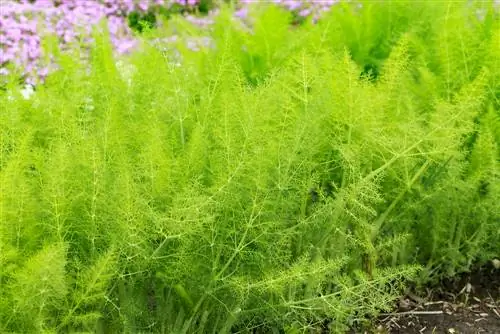
How to plant and harvest anise in the garden?
Anise should be sown directly outdoors after the Ice Saints in mid-May, with at least 25 cm planting distance. Choose a sunny, well-drained and slightly calcareous location. The cones are harvested when the shells turn brownish and are done by drying and knocking out the seeds.
How to sow anise?
Sowing directly outdoors is easy. However, the seeds are very sensitive to frost and should therefore only be planted after the Ice Saints in mid-May. Anise is a dark germ. Cover the seeds placed in seed grooves with soil about a centimeter thick. It takes about four weeks for the cotyledons to appear, so a little patience is required.
Alternatively, you can grow anise in seed boxes from February and transplant the small plants outdoors from mid-May.
What planting distance should be maintained?
When sowing, you have to pay attention to the right distance so that the herb develops well. It should be at least 25 centimeters.
Which soil does Anise prefer?
Anise grows well on humus-rich, slightly calcareous and well-drained soils. Loosen the bed deeply and thoroughly, as the strong roots reach up to two feet into the soil.
If your garden soil is heavy and clayey, you should mix it with a little sand to create optimal conditions. You can enrich very sandy soils with compost and clay powder.
Which location is the right one?
Since anise comes from the Mediterranean region, it prefers a sunny, warm place that is as sheltered from the wind as possible.
When is harvest time?
Anise blooms in July and August, and the umbels then ripen until the beginning of October. These should be harvested when the shells turn brownish. Then cut off the entire stems and let the seed heads dry very well.
To do this, tie the stems together and hang them upside down in a dry, warm place. Place a cloth under the umbels to catch falling seeds. The seeds can then simply be knocked out of the dried cones.
Are there good and bad neighbors for aniseed?
Next to “Good Heinrich”, a rediscovered salad and vegetable plant, anise feels extremely at home. However, the neighborhood with hyssop should be avoided, as both spice plants will then thrive poorly.
Can offspring be bred from self-harvested seeds?
This works without any problems, but it should be noted that the seeds only remain germinable for three years.
Tip
Anise should not be planted in the same location for longer than three years, otherwise the soil will become tired. Do not plant anise in a location where you grew radishes the previous year. Often the seeds don't grow well. Good bedding predecessors, however, are root parsley, wormwood, cardamom and onions.

